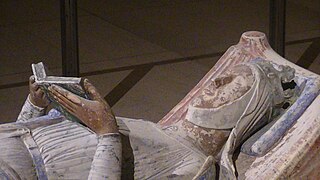
Eleanor of Aquitaine was Duchess of Aquitaine from 1137 to 1204, Queen of France from 1137 to 1152 as the wife of King Louis VII, and Queen of England from 1154 to 1189 as the wife of King Henry II. As the heiress of the House of Poitiers, which controlled much of southwestern France, she was one of the wealthiest and most powerful women in Western Europe during the High Middle Ages.

Richard I, known as Richard Cœur de Lion or Richard the Lionheart because of his reputation as a great military leader and warrior, was King of England from 1189 until his death in 1199. He also ruled as Duke of Normandy, Aquitaine, and Gascony; Lord of Cyprus; Count of Poitiers, Anjou, Maine, and Nantes; and was overlord of Brittany at various times during the same period. He was the third of five sons of Henry II of England and Eleanor of Aquitaine and was therefore not expected to become king, but his two elder brothers predeceased their father.

Louis VII, called the Younger or the Young to differentiate him from his father Louis VI, was King of France from 1137 to 1180. His first marriage was to Duchess Eleanor of Aquitaine, one of the wealthiest and most powerful women in western Europe. The marriage temporarily extended the Capetian lands to the Pyrenees.
The Lion in Winter is a 1966 play by James Goldman, depicting the personal and political conflicts of Henry II of England, his wife Eleanor of Aquitaine, their children and their guests during Christmas 1183. It premiered on Broadway at the Ambassador Theatre on March 3, 1966, starring Robert Preston and Rosemary Harris, who won a Tony Award for her portrayal of Eleanor. It was adapted by Goldman into an Academy Award-winning 1968 film of the same name, starring Peter O'Toole and Katharine Hepburn. The play has been produced numerous times, including Broadway and West End revivals.

Berengaria of Navarre was Queen of England as the wife of Richard I of England. She was the eldest daughter of Sancho VI of Navarre and Sancha of Castile. As is the case with many of the medieval English queens, little is known of her life.

Rosamund Clifford, often called "The Fair Rosamund" or "Rose of the World", was a medieval English noblewoman and mistress of Henry II, King of England. She became famous in English folklore.
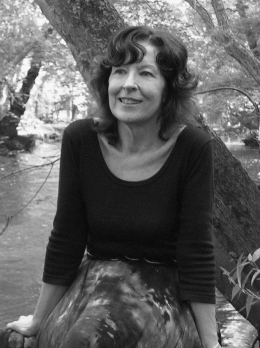
Sharon Kay Penman was an American historical novelist, published in the UK as Sharon Penman. She was best known for the Welsh Princes Trilogy and the Plantagenet series. In addition, she wrote four medieval mysteries, the first of which, The Queen's Man, was a finalist in 1996 for the Best First Mystery Edgar Award.
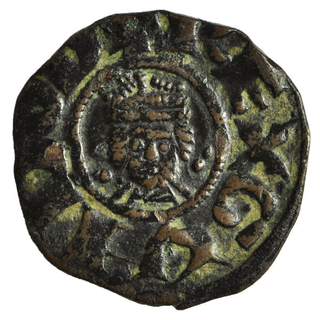
Guy of Lusignan was a French Poitevin knight who reigned as the king of Jerusalem from 1186 to 1192 by right of marriage to Sibylla, and King of Cyprus from 1192 to 1194.
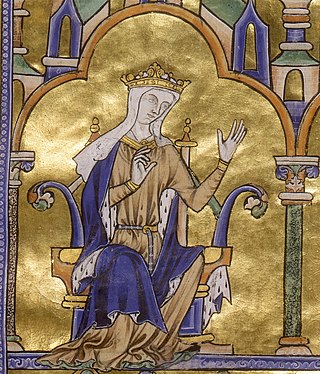
Blanche of Castile was Queen of France by marriage to Louis VIII. She acted as regent twice during the reign of her son, Louis IX: during his minority from 1226 until 1234, and during his absence from 1248 until 1252.

Marie of France was a Capetian princess who became Countess of Champagne by her marriage to Henry I of Champagne. She served as regent of the County of Champagne three times: during Henry I's absence from 1179-1181; during the minority of their son Henry II from 1181–1187; and during Henry II's absence from 1190-1197. The daughter of Eleanor of Aquitaine and Louis VII of France, she was the sister of Alice of France and the half-sister of: William IX, Henry the Young King, Richard I, Geoffrey of Brittany, Matilda of England, Eleanor of England, Joan of England, John of England; Margaret of France, Alys of France, Agnes of France, Philip II of France; and the stepdaughter of Henry II of England, and Constance of Castile, and Adela of Champagne.
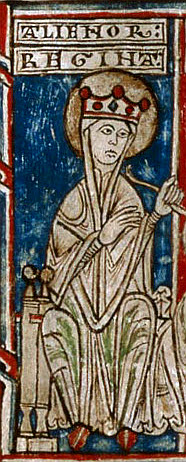
Eleanor of England, was Queen of Castile and Toledo as the wife of Alfonso VIII of Castile. She was the sixth child and second daughter of Henry II, King of England, and Eleanor of Aquitaine. She served as Regent of Castile during the minority of her son Henry I for 26 days between the death of her spouse and her own death in 1214.
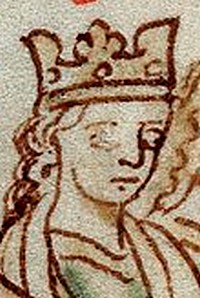
Eleanor of Provence was a Provençal noblewoman who became Queen of England as the wife of King Henry III from 1236 until his death in 1272. She served as regent of England during the absence of her spouse in France in 1253.

Carlisle Sessions Floyd was an American composer primarily known for his operas. These stage works, for which he wrote not only the music but also the librettos, typically engage with themes from the American South, particularly the Post-civil war South, the Great Depression and rural life. His best known opera, Susannah, is based on a story from the Biblical Apocrypha, transferred to contemporary rural Tennessee, and written for a Southern dialect. It was premiered at Florida State University in 1955, with Phyllis Curtin in the title role. When it was staged at the New York City Opera the following year, the reception was initially mixed; some considered it a masterpiece, while others degraded it as a 'folk opera'. Subsequent performances led to an increase in Susannah's reputation and the opera quickly became among the most performed of American operas.

Eleanor, Fair Maid of Brittany, also known as Damsel of Brittany, Pearl of Brittany, or Beauty of Brittany, was the eldest daughter of Geoffrey II, Duke of Brittany, and Constance, Duchess of Brittany. Her father, Geoffrey, was the fourth son of Henry II, King of England.
Petronilla of Aquitaine was a French noble. She was the second daughter of William X of Aquitaine and Aenor of Châtellerault. She was the elder sister of William Aigret and the younger sister of Eleanor of Aquitaine, who was Queen consort of France, later England. She is variously called Alix and Petronilla; she typically went by Alix after her marriage, while Petronilla seems to have been her childhood name.

The House of Plantagenet was a royal house which originated in the French County of Anjou. The name Plantagenet is used by modern historians to identify four distinct royal houses: the Angevins, who were also counts of Anjou; the main line of the Plantagenets following the loss of Anjou; and the Houses of Lancaster and York, two of the Plantagenets cadet branches. The family held the English throne from 1154, with the accession of Henry II, until 1485, when Richard III died.
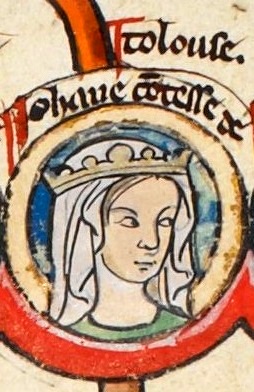
Joan of England was by marriage Queen of Sicily and Countess of Toulouse. She was the seventh child of King Henry II of England and Duchess Eleanor of Aquitaine. From her birth, she was destined to make a political and royal marriage. She married William II of Sicily and later Raymond VI, Count of Toulouse, two very important and powerful figures in the political landscape of Medieval Europe.

Joan of England, was Queen of Alba (Scotland) from 1221 until her death as the wife of Alexander II. She was the third child of John, King of England and Isabella of Angoulême.
Alison Weir is a British author and public historian. She primarily writes about the history of English royal women and families, in the form of biographies that explore their historical setting. She has also written numerous works of historical fiction.
Events from the 1160s in England.
















